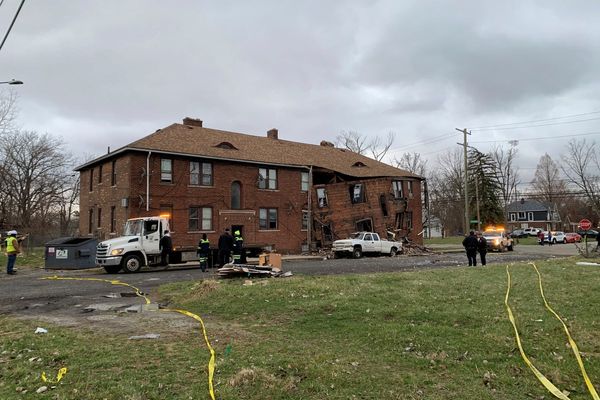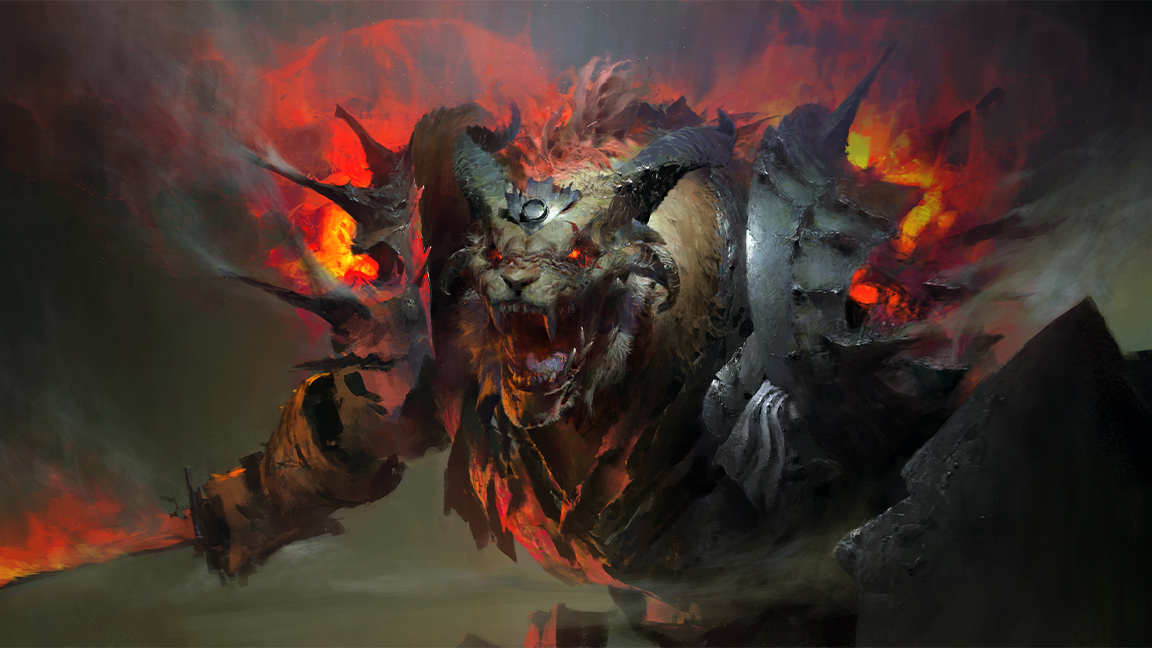
The Guild Wars video game franchise has been visually distinct since its release in 2005, but it was the launch of Guild Wars 2 that really made the online role-playing game stand out in a crowd. The series is known for its painterly art style and rich world-building, that's reminiscent of the French fantasy 'bande dessinée' art style, making it an inspiration for any artist who wants to break into the games industry.
At the heart of this visual identity is art director Aaron Coberly, who has played a pivotal role in shaping the aesthetic of both Guild Wars and Guild Wars 2. He has worked with some of the famous names that helped craft the series' artistic vision, including Kekai Kotaki, Richard Anderson, Theo Prins, Ruan Jia (a modern fantasy art master), Jamie Ro and Daniel Dociu. But times change, and ArenaNet has new emerging concept artists pushing the series in new directions, including concept artist Matthew Pugnetti .
Meeting with Aaron is interesting; he's passionate and clearly still excited about how Guild Wars 2's art direction can evolve in future releases. As we chat, he reflects on the artistic philosophy behind the franchise, the evolution of digital painting generally, something the Guild Wars art team has been pivotal in developing, and the delicate balance between technology and timeless artistry.
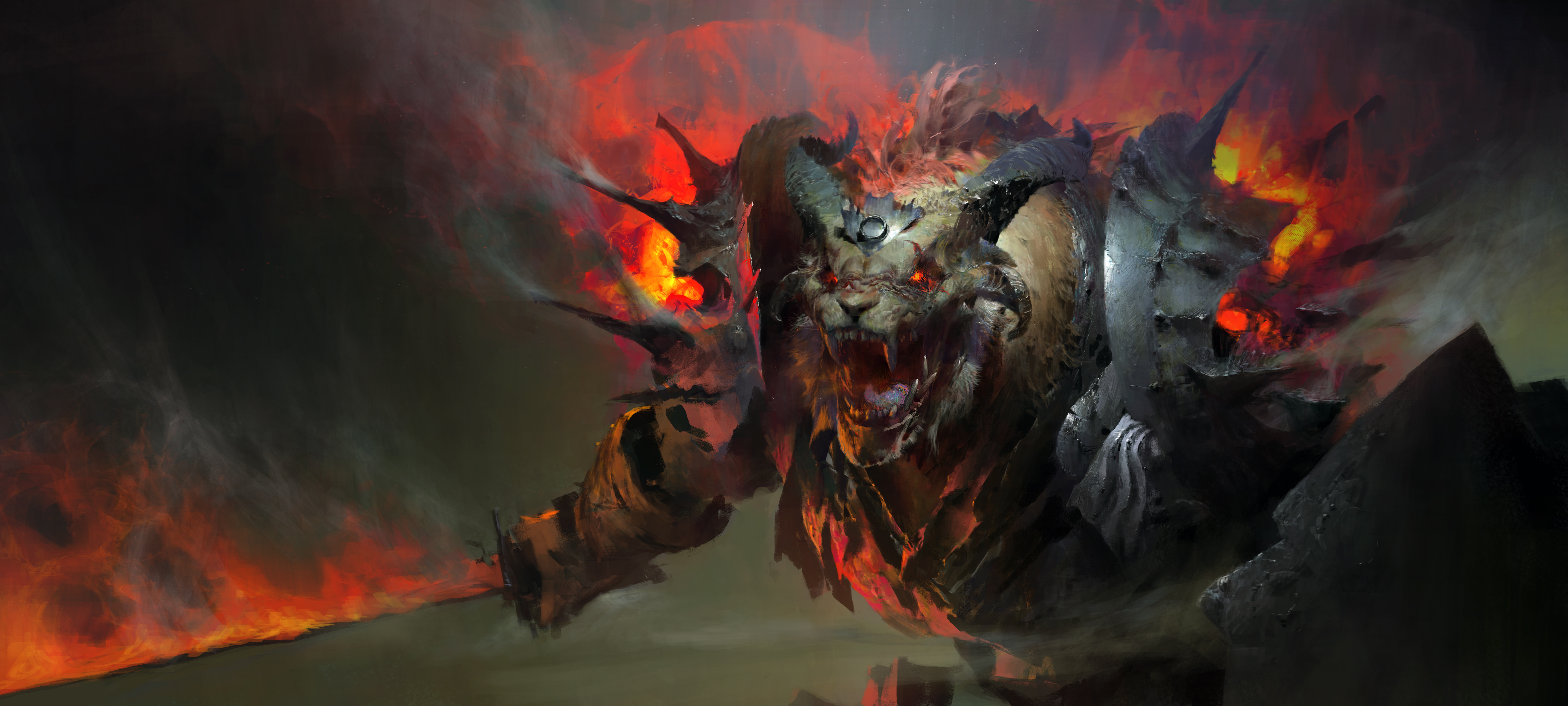
A world build on strong artistic foundations
One of the defining aspects of Guild Wars' art direction is its emphasis on strong foundational art skills and techniques rather than purely technological advancements – it would be too easy to focus on the digital nature of the art team's work using the best digital art software. Aaron highlights how the team's traditional art background has played a crucial role in defining the game's look.
"We had a staff of people with a lot of traditional art training who were passionate about the process," reflects Aaron. "It was less about what technology could do for us and more about how we could use technology as a language to create what we wanted to create."
The approach, of harnessing the latest digital art tools in Photoshop and other apps with core traditional art theory, enabled the art team to focus on storytelling and composition rather than chasing trends in graphical realism, which has become something of an obsession in the era of Unreal Engine 5.
“Quite often, photo realism, or hyper realism, makes you reliant on the technology at the time, and you’re always chasing it. We wanted to create something unique that could stand on its own, outside of those limitations,” says Aaron.
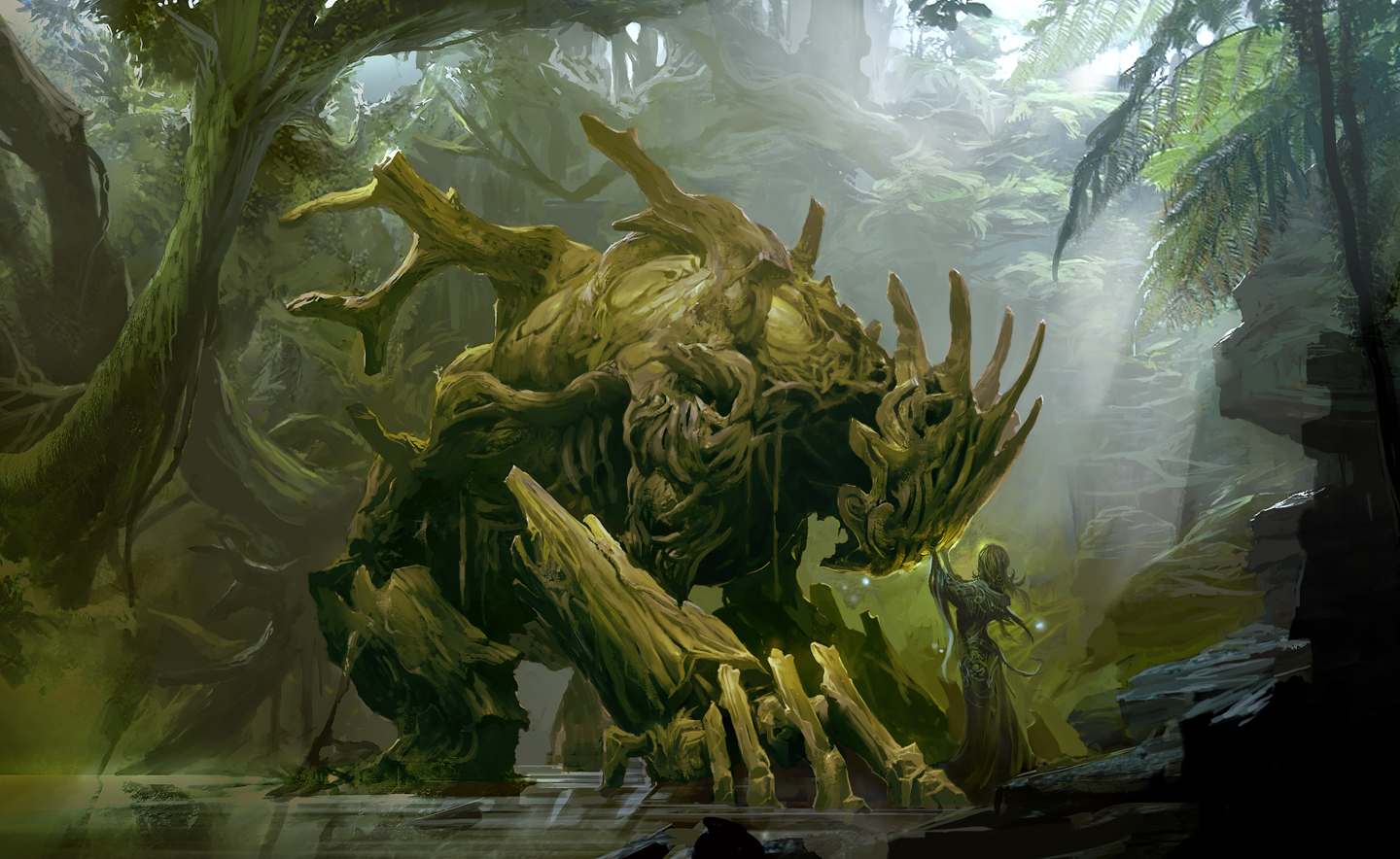
While Guild Wars set a precedent for a hand-painted visual design, the sequel Guild Wars 2 took it further by enhancing what was already established rather than overhauling the game series' style.
“The core art direction remained the same,” says Coberly. “Our North Star was always a handcrafted, painterly, high-fantasy world with rich, clearly defined materials. When we moved to Guild Wars 2, it wasn’t about changing what we did, but rather doing more of what we could do. We had better lighting, more complex materials, and normal maps on everything – but at its core, it was still the same philosophy.”
You just need to learn the language of the new tool. What matters is understanding design principles – composition, colour, shape language
Aaron Coberly, art director Guild Wars 2
The video games industry has seen massive advancements in digital software and new game engine technology, as seen in titles such as Clair Obscur: Expedition 33 and the finer details of Assassin's Creed Shadows open world. But Aaron believes that true artistry is technologically agnostic.
"If you have strong foundational skills, you can adapt quickly," Aaron explains. "You just need to learn the language of the new tool. What matters is understanding design principles – composition, colour, shape language. People often get enamoured with technology and halfway through a piece realise it’s not working because they didn’t think about the fundamentals first."
The Guild Wars art team was known for using Photoshop in ways that many digital artists were experimenting with at the time. Guild Wars 2 artists like Ruan Jia and Thomas Scholes found new ways to use the software, pioneering techniques like photo-bashing (read Thomas Scholes' modular concept art tutorial for an insight).
"That style, particularly in the early days, was very much influenced by Daniel Dociu, who shared a lot of his techniques and processes with the team," Aaron notes. "It seeped into different areas and became a recognisable aesthetic, not just in Guild Wars but in the digital art world at large."
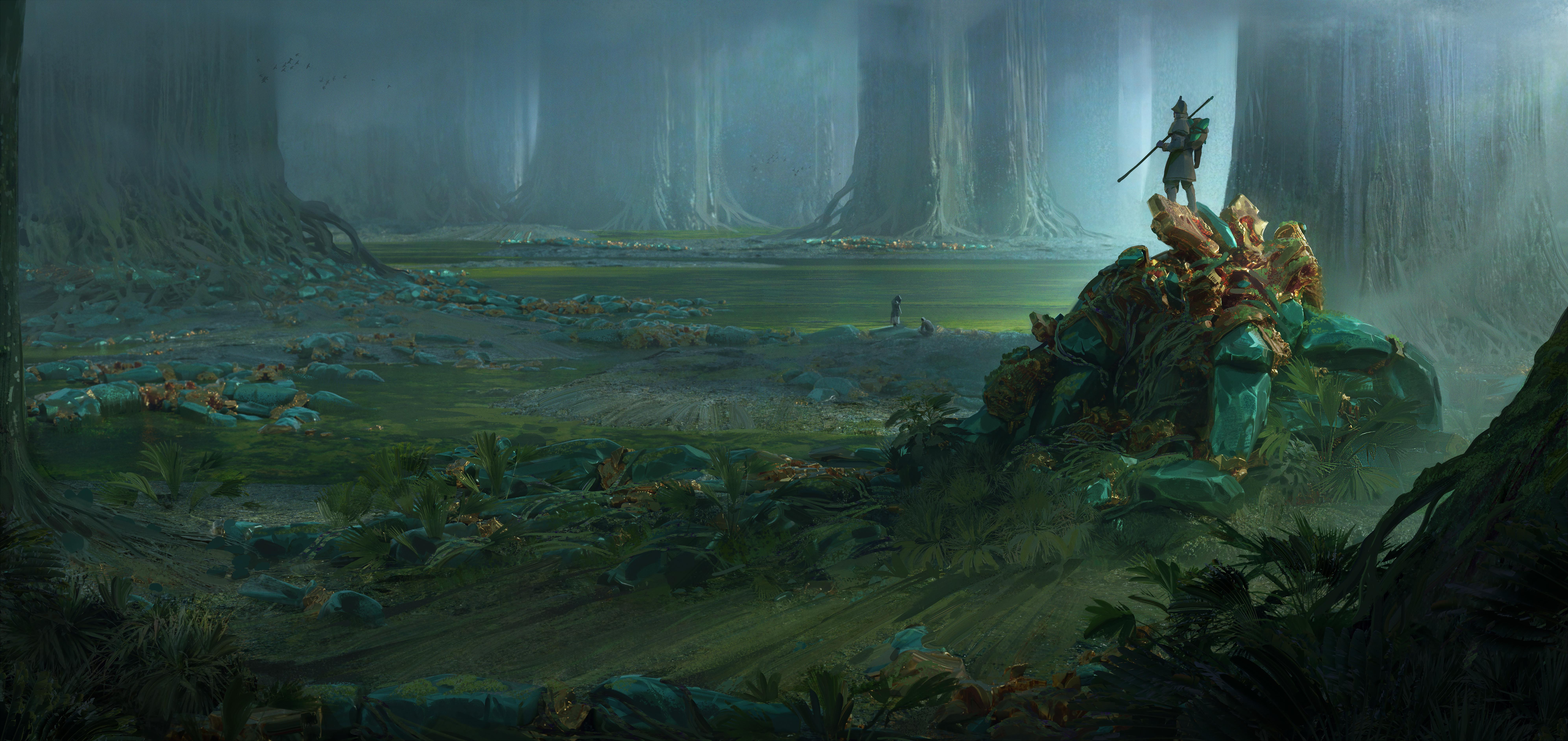
Guild Wars unique longterm vision
Creating art for a game that has been running for two decades comes with unique challenges. The art must evolve, but it can't break the established identity set out but those original artists.
"Our art direction needs to be strong because Guild Wars 2 has to iterate gradually while maintaining consistency,” Aaron explains. "We’ve seen games where a singular vision is too narrow, making any deviation feel out of place. On the other hand, we’ve aimed to have a broad enough North Star so that artists can put their own stamp on things while keeping it cohesive."
The shear scale and density of the Guild Wars universe has enabled each new art team to stamp their identity on it, to explore new ideas while retaining the overarching visual style. This balance is key in a massively multiplayer online game (MMO) where new environments, armour sets and creature designs are continuously introduced.
Aaron explains: “We ask, 'What's the story we’re trying to tell? What’s the material language?' If a piece of leather armour is made by the Charr [a race of large, savage, feline creatures], it should reflect their culture – rough, battle-worn. If it's Asura-made [small artisan people], it might be engineered differently or not even leather at all. Those kinds of questions help ground the art in the world."
The impact of colour
One of the most critical aspects of Guild Wars' visual storytelling is its use of colour. "Colour is a language in itself," Aaron says. "It helps set the mood, guide the player's eye, and reinforce the story we’re telling."
For example, different zones in Guild Wars 2 use distinct colour palettes to evoke specific emotions. "If we want a place to feel serene, we use soft greens and golds. If we want something foreboding, we lean into deep purples and cold blues. Even on a micro level, understanding how colour interacts within an asset brings it to life."
As tools and software like 3D sculpting, including now ZBrush for iPad, and AI-assisted imagine generation become more prevalent, Aaron acknowledges their usefulness while emphasising these are just tools and now a means to an end. "Some concept artists use 3D heavily to block out shapes and perspective before painting over it, while others work entirely in 2D," reflects Aaron. "It’s a personal preference."
However, Aaron warns against over-reliance on new technology, telling me AI isn't something he and his team use. As he explains, while gesturing frantically using a pencil on paper, “sketching allows for rapid iteration – an artist can create ten different outfit designs in an hour, whereas modelling a single outfit might take days. The ability to explore ideas quickly is invaluable."
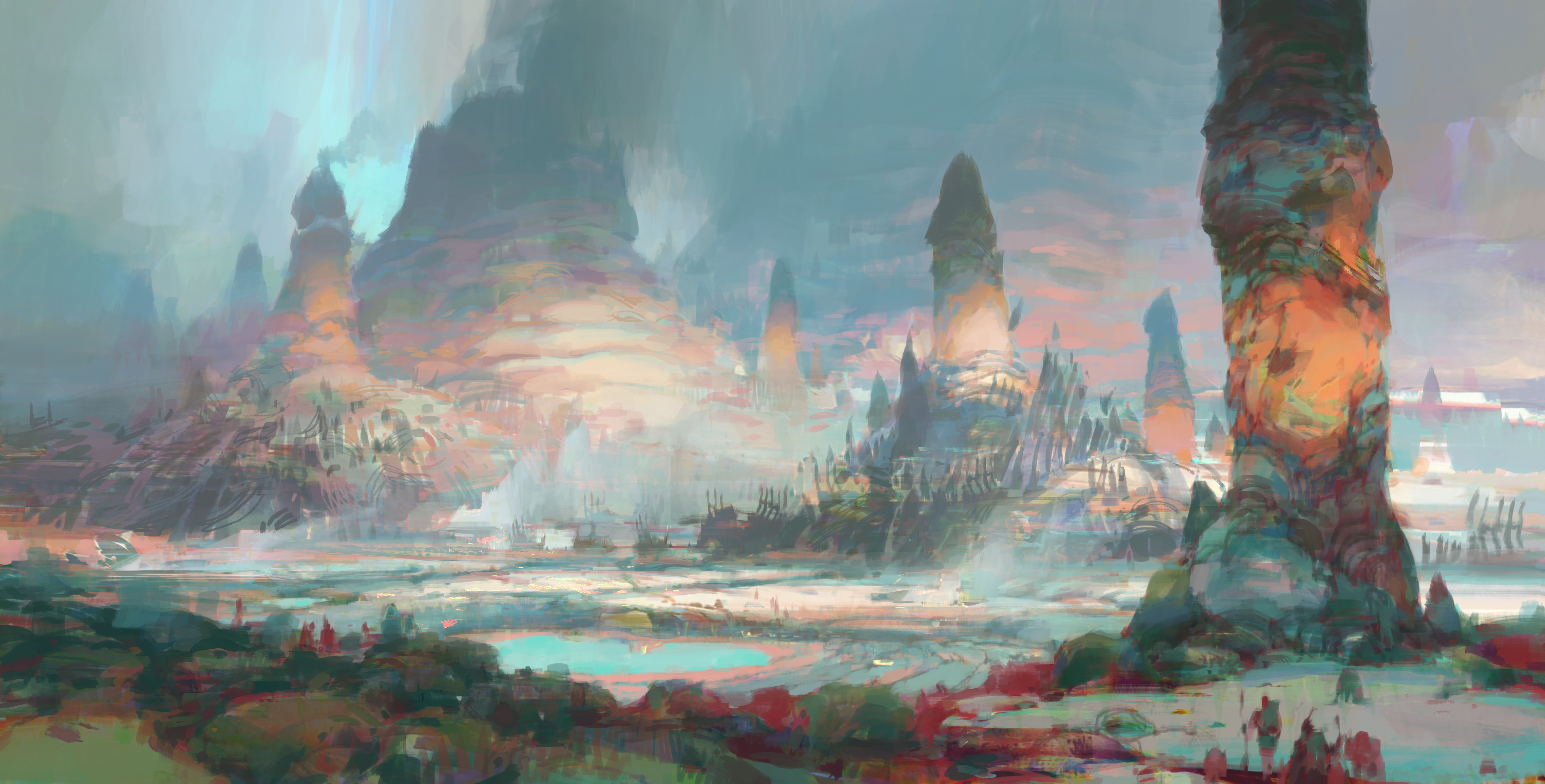
Everything for Aaron comes back to those foundational art skills, from mastering colour theory to understanding composition. Insisting on a deep understanding of the principles of art is one reason why the Guild Wars visual style remains uniquely painterly, authentically real.
Beyond directing the game's visuals, Aaron is deeply invested in mentoring the next generation of artists. "A few years ago, I recognised that many artists, especially those who jumped into digital art early, were missing some of the foundational skills that make for great decision-making in art," he explains. "So we started doing art talks, bringing in established artists to teach the principles of composition, value, shape and storytelling."
This, believes Aaron, is the key to longevity in an industry that constantly evolves. "Technology changes, but artistic principles don’t. If you understand visual storytelling, you can adapt to any new tool that comes your way."
Guild Wars still holds up because we focused on creating something timeless, rather than trying to push cutting-edge graphics that would be outdated in a few years
Aaron Coberly, art director Guild Wars 2
Speaking with Aaron I get the sense the goal for Guild Wars visual direction has always been to create an art style that remains impactful regardless of technological shifts, the rise and fall of trends, or the whims of an increasingly topsy-turvy games industry.
"We don’t chase technology for the sake of it. We use it to enhance the world we're building. Look at Guild Wars – it still holds up because we focused on creating something timeless, rather than trying to push cutting-edge graphics that would be outdated in a few years."
Through strong artist foundations, thoughtful storytelling and a commitment to craft, Guild Wars has cemented itself as one of the most visually distinct games still worth playing. Its world grows with each new release – the colourful Janthir Wilds – Repentance expansion is a testament to this – but remains true to the original vision released twenty years ago.
Visit the Guild Wars 2 website for the latest news, expansions and how to play.



